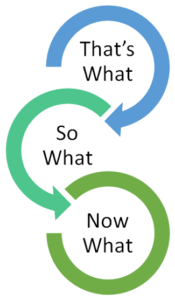I’ve been really blessed in this life. I was born into a loving family that cultivated the core values, beliefs, and work ethos that have held me in good stead. I got a great education. I married a wonderful man. I’ve worked with good people and remained friends with many of them long after our professional association ended. And I’ve been surrounded with lovely people outside of work. In short, I have much for which to be thankful.
I’ve also experienced my fair share of hurt, disappointment, reversals of fortune, bad news, and bad luck. Personal and professional opportunities didn’t materialize as expected. Relationships hit rough patches and/or ended. Finances took a nosedive. Health suffered or declined. Circumstances beyond my control gave rise to major changes in my lifestyle (e.g., COVID). I’ve made knuckleheaded mistakes and caused needless suffering. I could go on and on.
When I keep my wits about me, I use a simple mental device to get myself over these bumps in the road. I picked it up in a seminar years ago. It goes like this: That’s what. So what. Now what.
 That’s What
That’s What
Naming the bump in the road is the first step in figuring out how to deal with it. In some cases, it’s painfully clear. The stock market crashed. The job or promotion didn’t come through. The doctor just provided notification of an unpleasant diagnosis. In such cases, the facts are readily apparent. Other circumstances may be less clear cut. A relationship may show signs of wear, but it isn’t yet apparent that something significant has shifted. A gut instinct may suggest there’s something not right physically, but the condition hasn’t been checked out or confirmed. A major reorganization at work just went into effect, but its impact has yet to be realized.
That’s What calls upon us to use all of our senses and sensibilities to come to terms with what is happening to us in the moment. It asks us to confront the fact that we’ve either already plowed headlong into a “bump” or can see it clearly on the horizon. In this period of reckoning, we may experience a wide array of emotions and bounce around the various stages of grief of which Elisabeth Kübler-Ross has written so eloquently – i.e., denial, anger, bargaining, depression, and acceptance. It can take time to process and, perhaps, the compassionate support of those who can bear the weight of our distress. At the end of the day, we need to tell ourselves the truth about our circumstances to the best of our ability.
So What
Having acknowledged a change in our circumstances, we can now begin to contemplate what it actually means. It’s a time to exercise curiosity and explore ways of responding. We may not have all of the facts in hand and opt to do a bit of research to fill in gaps in knowledge or information. We may need to engage in dialog with others to lend clarity to our understanding, assumptions, and sensibilities. We may need to pause and simply give ourselves time to process what has occurred.
As we consider options, we may ask: How will each potential course of action impact my lifestyle? My livelihood? My relationships? My sense of self? Do I really need to do anything at this time? Can I go around the bump instead of over it? Or does this situation argue for reversing course and traveling on a different road?
When I am able to gain some emotional distance from a difficult situation, I take comfort in being inquisitive and exploring options. It gets me out of “victim mode.” My options may still be grim, and I may still feel saddened by them. But I can choose my course of action and the attitude I’ll take in its pursuit.
Now What
Having considered available options, we can move forward and take the experience as it comes. Hopefully, we’ll let the past be the past and catch ourselves when tempted to ruminate about it. We cannot change it. We can only be present in the moment and put one foot in front of the other.
Clearly, this approach would likely fall short when dealing with profound grief, tragedy, or trauma. But for the everyday “cuts and bruises,” it can be quite effective.